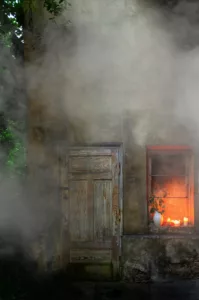
Guaranteed Safe & Secure Checkout
Want free delivery? Add £200 more.

When it comes to fire safety and energy efficiency, cold smoke seals play a crucial role in maintaining a secure and well-insulated environment. Most people are familiar with the concept of fire barriers and smoke barriers, but many may not be aware of the importance of cold smoke seals in preventing the spread of smoke in the event of a fire. In this comprehensive guide, we’ll explore the role of cold smoke seals, how they work, and their significance in fire safety and energy efficiency for both residential and commercial properties. Whether you’re a homeowner looking to enhance your family’s safety or a business owner striving for a more energy-efficient building, this article will provide you with the insights you need.
Cold smoke seals are specialized sealing solutions that play a crucial role in preventing the spread of smoke within a building. These seals are typically installed in the gaps around doors and windows, as well as in any other openings in a building’s fire barrier system. Cold smoke seals are designed to expand when exposed to heat, creating a tight seal that effectively prevents smoke from passing through.
These seals are essential components of fire-rated doors and windows. Their primary function is to inhibit the passage of cold smoke during a fire incident. While fire-rated doors are effective in stopping the spread of flames, they may not be entirely airtight. This is where cold smoke seals come into play, creating a barrier against the passage of smoke, which is often the primary cause of fatalities in a fire.
Cold smoke seals work by creating a tight seal around the perimeter of doors and windows. When a fire occurs, smoke is generated due to combustion, and it seeks the path of least resistance to escape. If there are gaps around doors and windows, the smoke can infiltrate into other areas, making evacuation more challenging and putting lives at risk. Cold smoke seals are typically made from fire-resistant materials and are installed on the frame of the door or window. When the door is closed, the seal compresses against the door, creating a barrier that effectively prevents smoke from passing through. This extra layer of protection helps maintain a clear and breathable atmosphere in areas where people are evacuating during a fire, buying valuable time for escape.
There are various types of cold smoke seals available, each with its own unique features and benefits. Some common types include intumescent strips, silicone seals, and brush seals. Intumescent strips are made of a material that expands when exposed to heat, creating a seal that is effective in preventing the spread of smoke. Silicone seals are flexible and can be used in a variety of applications, making them a versatile option for cold smoke sealing. Brush seals are made of a combination of metal and brush bristles, providing a durable and effective seal against smoke.
Cold smoke seals and intumescent strips are both important components of fire safety systems, but they serve different purposes and work in distinct ways.
Cold Smoke Seals:
Intumescent Strips:
The key difference between cold smoke seals and intumescent strips lies in their primary purpose. Cold smoke seals are specifically designed to prevent the passage of smoke and are often used in addition to fire-rated doors, whereas intumescent strips provide protection against both fire and smoke and are commonly used in fire doors and other fire-rated assemblies to create a comprehensive barrier against both threats. The choice between these components depends on the specific fire safety requirements of a building or application.
In order for cold smoke seals to be effective, they must be properly installed. This means ensuring that there are no gaps or openings in the seal and that it is securely attached to the door or window frame. It is also important to regularly inspect and maintain cold smoke seals to ensure they are in good working condition.
When selecting cold smoke seals, it’s essential to consider factors such as fire rating, material, and compatibility with your doors or windows. Firewise supply a range of cold smoke seals from leading brands such as Sealmaster, Lorient, Ventura and Mann Mcgowan. Consult with one of our technical experts here at Firewise to ensure you choose the right product for your specific needs.
Cold smoke seals are more than just an accessory for your doors and windows. They are vital components of fire safety and energy efficiency, offering protection and peace of mind. By understanding their importance and making informed choices, you can create a safer and more energy-efficient environment for your home or business.
Investing in cold smoke seals isn’t just about complying with regulations; it’s about taking proactive steps to protect what matters most – your loved ones and your property. Prioritize fire safety and energy efficiency by exploring the range of cold smoke seals and the benefits they offer.